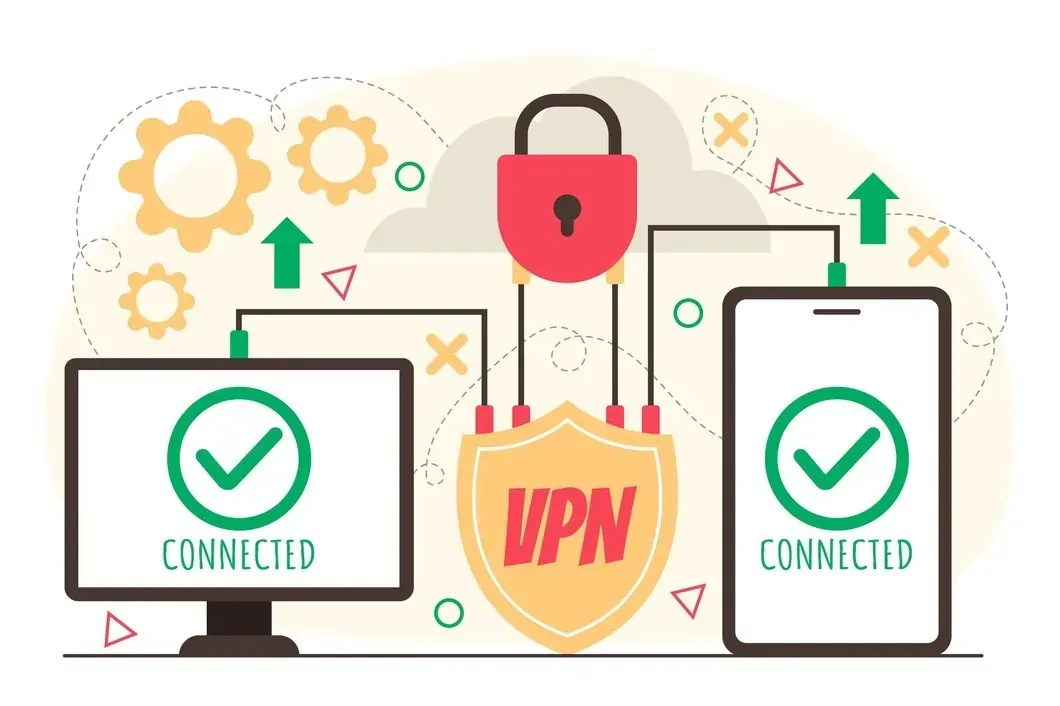
When remote work became a predominant work model for the majority of businesses, cyber attacks started to rise drastically. As a matter of fact, cybercrime rates rose by 38% in 2022, compared to the year before. This drastic increase in cybercrime rates is frightening for businesses of all sizes because it indicates that they can be hit by a cyber attack at any moment, and become a victim of data breaches.
When cybercriminals steal the stored confidential data of a business, they leave this business to deal with high monetary costs and reputational damages. That’s why businesses can’t neglect the importance of good cybersecurity hygiene, and they need to adopt security solutions that will help them secure remote employees and the company’s assets.
In this regard, adopting a high-quality VPN solution can help businesses improve data and remote work security. In this article, we’ll analyze VPN split tunneling feature, and its pros and cons.
Let’s begin with briefly explaining what is split tunneling.
What Is Split Tunneling?
When businesses employ a VPN solution, they can decide to use full or split tunneling. Full tunneling refers to sending all network traffic to the VPN server and encrypting everything. On the other hand, split tunneling refers to selecting specific applications, assets, and URLs and sending these through the VPN tunnel, and encrypting all network traffic related to these.
While using VPN split tunneling, businesses can prioritize assets that need VPN protection and encryption. This way, only a section of network traffic is sent to the VPN server and encrypted. Except for these predetermined assets, everything is sent to remote users’ gateway and has direct access to the internet without encryption.
VPN split tunneling can be done in three methods which are as follows-
- Application-based
- URL-based
- Inverse split tunneling
Application-based split tunneling refers to selecting applications that will be routed to the VPN server, and be encrypted.
URL-based split tunneling refers to choosing specific URLs that will be encrypted and sent to the VPN server.
Inverse split tunneling refers to choosing applications and URLs that won’t be sent to the VPN server, while the remaining assets, applications, and URLs will be sent to the VPN server.
If a business uses inverse split tunneling, IT teams must select undesired applications, and URLs, or else everything will be encrypted and sent to the VPN tunnel. Shortly, split tunneling helps businesses choose assets, applications, and websites that need secure connections and VPN protection.
Pros of Split Tunneling
1. Improved Network Performance and Internet Speed: Establishing improved network performance and internet speed is the best benefit of split tunneling. As we mentioned earlier while using the split tunneling feature, only a portion of network traffic is sent to the VPN server and this helps businesses to have better network performance and internet speed during streaming, online meetings, and calls.
Also, it allows businesses to maintain lighter network traffic in headquarters and data centers. This way, businesses can decrease hardware expenses and have the best network performance and speed while protecting predetermined applications, websites, and assets.
2. Prevents Network Congestion and Data Throttling Problems: Sending a portion of network traffic to the VPN server, and maintaining lighter traffic prevent network congestion and data throttling problems. Also, while using split tunneling, businesses' internet service providers (ISP) can’t see how much data they are consuming. For this reason, they won’t be able to slow down the internet speed of businesses.
3. Using Multiple Networks Simultaneously: While using split tunneling, employees, contractors, or business partners can connect multiple networks at the same time. This is quite handy because each time a user accesses a network, they aren't required to connect and disconnect from the VPN continuously.
Cons of Split Tunneling
1. Security Vulnerabilities: VPN split tunneling doesn’t have security vulnerabilities by default, but it can leave a network open to spying and cyber-attacks. Routing some parts of the traffic to the VPN server leaves the remaining parts exploitable to cyber attacks.
For example, employees' devices can be infected by malware, and cybercriminals use this infected device to gain illegitimate access to the company’s network and steal sensitive data or they can use this device to damage the network itself. When implementing split tunneling, businesses should realize that some parts of the network won’t be protected by VPN and cyber attacks can occur at any moment. For this reason, businesses must implement additional security measures and solutions to protect end-point devices from cyber attacks.
2. Network Monitoring Issues: While using split tunneling, it is almost impossible to track down and audit all connections. Simply, enabling this feature means that businesses won’t have complete control or visibility over the endpoints, and they can’t really see who is doing what inside the network perimeter. Also, the split tunneling feature brings the possibility of illegitimate data sharing.
3. Complex Configuration: Configuring split tunneling can be a complex process that requires a certain level of technical knowledge and understanding of network protocols and routing. This makes it difficult for non-technical users to set up and manage, which can lead to misconfigurations and errors that could compromise the security of the network.
Additionally, because different VPN services may have different configurations and protocols, users may need to invest time in learning how to properly configure split tunneling for each individual VPN they use.
Last Remarks
Modern-day businesses are in need of security solutions that will enable robust data and remote work security to handle high-security risks. In this regard, VPNs are cost-effective, scalable, and reliable remote access solutions that will considerably improve remote work, network, and data security.
After implementing a good VPN solution, businesses can choose to use full or split tunneling features. Using split tunneling will provide the best network performance and internet speed, but unprotected parts of the network traffic can be exploitable by criminals. That’s why additional security tools are needed to protect endpoints.